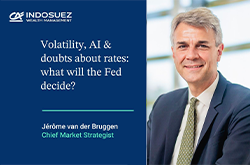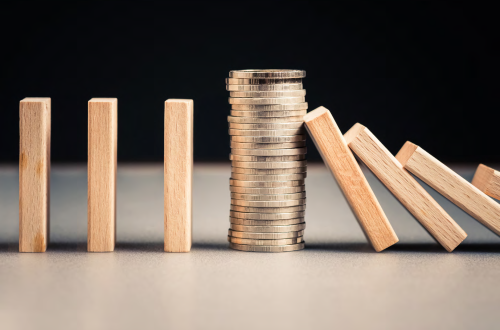
Monthly House View - October - Download here
I hope you had a great summer, whether you spent it with family or friends, in the sun or looking for cooler temperatures, or away from social media in order to be fully present in the moment.
Not too hot, not too cold: that's how we can describe the state of the US economy with a nod to the "Goldilocks" economic scenario. With summer comes a time to pause and reflect: a year ago, who would have thought that the Federal Reserve (Fed) would be bringing the US economy in for a landing, thus avoiding an unavoidable recession? The US economy has indeed continued to surprise since the beginning of the year. As proof, forecasts for US GDP growth for 2023 were close to zero at the beginning of the year, and now stand at around 2%. We ourselves began to raise our forecasts in the second quarter without becoming overly pessimistic. Maybe "The Recession That Never Was" will be on the bestseller list next summer.
The summer was ultimately (too) hot for US long-term rates. The rate on the 10-year bond has gone from 3.7% to 4.3% as of late September. However, the main contributing factor has actually been the real rate. The first rate hike phase was related to the tightening of monetary policy in response to inflationary shocks. But this recent rise in real rates led to a stabilisation of inflation expectations, which are now hovering at around 2.3% (10-year breakeven), while nominal rates have continued to rise. The Fed restored its credibility in its fight against inflation, sticking to its message that rates will remain high for longer, with the market pushing back and revising its expectations for the first rate cuts. So the first explanation for the rise in long-term rates relates to the vigour of the US economy, justifying a higher real rate. The second is the return of the term premium investors require: in other words, a higher rate of return to compensate them for the risk of holding long-term government bonds rather than short maturities. There has been a constant deluge of supply (issuance by the US Treasury to finance the public debt): the national debt is approaching 32 trillion dollars, up by 50% in five years and by 1.5 trillion dollars since the debt ceiling deal was reached in June.
Additional investments are needed to fund the deficits related to the war and the energy transition, and to support consumption. On the demand side, the investors who usually buy bonds to invest their dollars are spurning the greenback. Some are doing so to diversify or because of a change in domestic monetary policy, others for political reasons, presumably to reduce their dependence on the United States. Just like the supply/demand equation, the question now will be where the equilibrium point lies.
This question is crucial for portfolio management. In recent months, the correlation between the equity and bond markets has turned positive again: equities are falling because rates are rising (bond prices are falling at the same time). An investor who bought a US 10-year bond this year is seeing a negative performance. The performance of 50/50 diversified funds is suffering because of this, as are flows: 20 billion euros in outflows at end June according to Morningstar, versus 100 billion euros in inflows for bonds (mainly with short maturities) and money-market funds. For private clients, this volatility on long-term rates is not sustainable. That being said, an equilibrium point will make long-term bonds attractive again, and provide the necessary diversification to increase the appeal of diversified portfolios.
Overall, we are close to neutral in terms of duration, but continue to favour carry for up to five years. We turned positive on equities at the beginning of the summer and maintain a constructive view. Within equities, it was a tough summer for renewable energy stocks: the rise in long-term rates had a significant impact on long-term investment plans for these projects, coupled with cost inflation, changes in regulations in the United States, and defect issues with the existing stock. On this topic, I encourage you to read the fascinating article in this issue titled "Sustainable Finance: A summer of paradoxes", as well as our experts' comments on the different asset classes.
Monthly House View, 22/09/2023 - Excerpt of the Editorial
October 03, 2023




